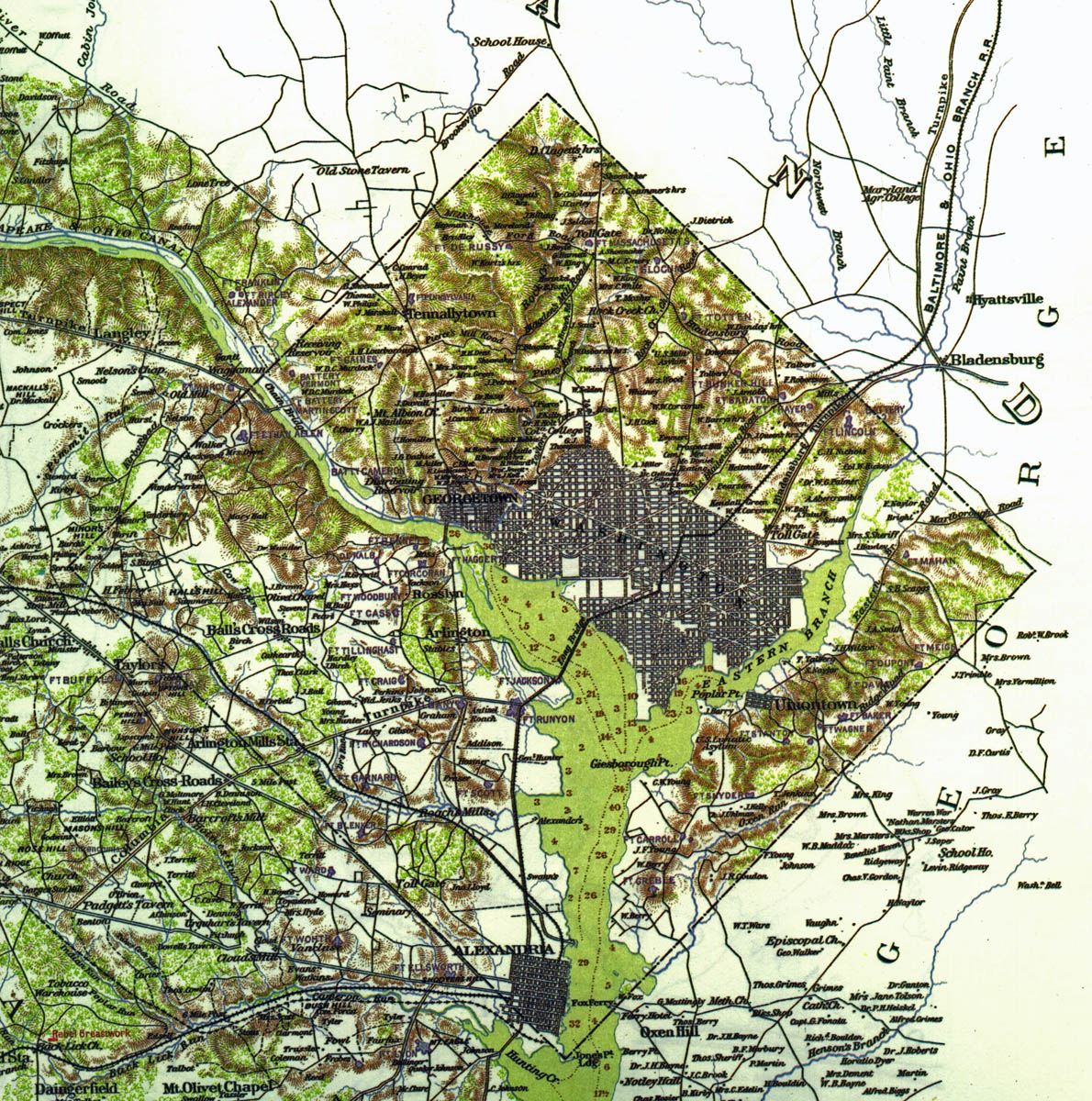
The District of Columbia was created as a Capital for the United States and a home for the Federal Government. Prior to the creation of the District, Congress met in various existing cities and there was a great deal of competition among the larger northern cities to be the site of a permanent Capital. On June 20, 1783 a large group of unpaid Revolutionary soldiers made their grievances known to Congress. The idea that the Federal government might be held captive by an urban mob was planted in the mind of Congress and influenced subsequent decisions. There was a great deal of discussion regarding different sites during the 1789 session, but at the end of the session no accord was reached. Sites on the Susquehanna River or the Potomac River, as well as various existing cites were under discussion. During the 1790 session a compromise was reached to locate the Capitol on the Potomac River. At the time this had the advantage of being between north and south and the site of canal projects envisioned as being major commercial routes west.
The residence bill became law on July 16 1790. The Act provided that the seat of government be located at Philadelphia until the first Monday in December 1800 at which time it would be permanently located on the Potomac River. The President was given the authority to choose the exact site and purchase land. The site chosen was between Eastern Branch of the Potomac River and Georgetown. Once established the territory took in three existing towns, Georgetown, Hamburg, Alexandria. Commissioners had been appointed to oversea development in the District and construction of public buildings. The basic design of the district was the work of French-born Pierre-Charles L'Enfant, who served as an engineer during the Revolutionary War. He envisioned a city of 800,000 and the equal to Paris. His basic plan was adopted, but his fate was like that of many other visionaries. He was fired after removing the home of the influential Marylander Daniel Carroll to make way for an avenue. Much of the land within the district was still wooded.
By 1800 the city was still far from complete. The population on the Maryland side was 8144 and on the Virginia side 6144. Within Washington there were 109 buildings of brick and 263 of wood. By the time of the movement of the government to Washington the city was growing but lacked the polish of the established centers Congress had been meeting in.
In the years that followed, the citizens living on the Virginia side of the District felt at a disadvantage. There were growing concerns that slavery would be abolished in the District and that the economic development of the Virginia side was being neglected. After much agitation and petitions and the approval of the Virginia General Assembly, an Act of Congress passed July 9, 1846 retroceded Alexandria County to Virginia. At this point Washington assumed its modern political boundaries.
It is clear that a number of Lanhams were living within the territory taken up by the District of Columbia. The first census of the District includes households headed by Hilleary Lanham, Jacob Lanham, Jesse Lanham and Zadock Lanham. By the time of the 1850 census many of the Lanhams living within the District were free African-Americans. The churches within Washington were a site of marriages of Lanhams from out lining areas. Washington was also a place to learn a trade or find employment. There were also Lanham families located in Alexandria County on the Virginia side. Several Lanhams who were from families who left Maryland generations prior found their way back as members of Congress these included: Henderson Lovelace Lanham, Fritz Garland Lanham and Samuel Willis Tucker Lanham